Getting to pheasant heaven takes patience.
Due to inconsistent inventory and volatility of pheasant feather pricing, I’ve done my best to develop à la carte style quoting method. Please follow the instructions carefully to help you budget for a set of pheasant fans, but also submit your final purchase request.
Take your time, come back to this page after you’ve had some time to review the configurations of past projects and experiment by putting things in and out of your cart.
To proceed with an order you’ll need a both a stave package AND a pheasant feather package. Once purchased, I will follow-up to get your color preferences (for staves and feathers) and confirm the configuration of your package to the spend total.
Not sure where to start?
Browse the gallery for inspiration!
Find fans you like and are close to what you’d like to build or perform with. Read the post description to help guide your learning. You can also sort by feather type, color and packages.
If you need more guidance, book a virtual consultation with Donna Touch!
FIRST – Pick your stave package
The following stave designs are always available! They can all accommodate feathers mounted on both the back (usual position with a single row that works best with the feather flow) and front of the stave (usually used with greater amount of feathers or if shorter front feathers are part of the design).
If you plan to expand your original set in the future with more feathers, I encourage you to purchase the larger stave set at the time of your first build. We can either set aside the extra staves to have them ready for your upgrade OR I can assemble the feathers across the full set with the staves overlapping more. This will ensure that you have the matching stave design and color for your expansion.
If you are looking for a custom design structure, I still recommend considering the feature of these options before proceeding to the custom commission request. Most of the customizations are built on variations of these tested designs.
Scallop Staves
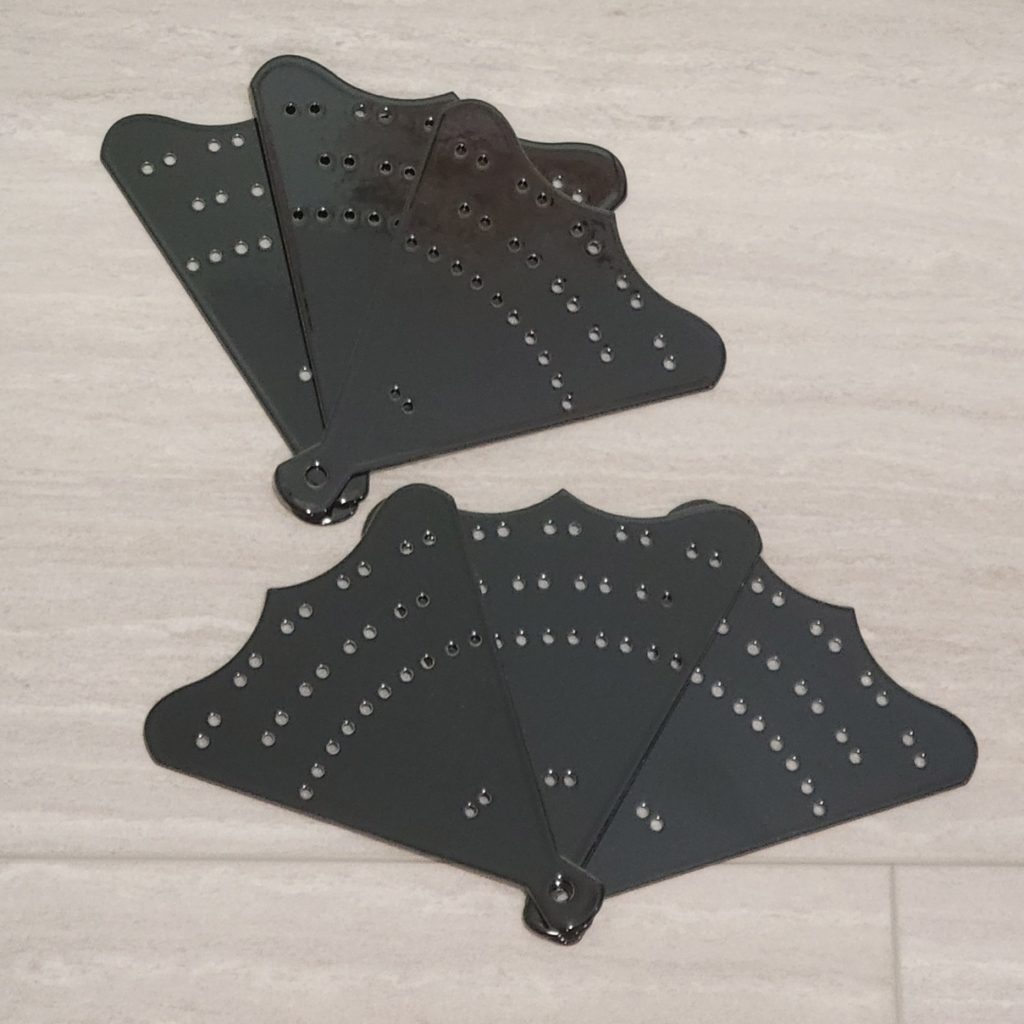
View past projects on the scallop staves.
These staves are the most compact and creates the tightest radius. These are the best option if you want the fan to look very dense, have a more cohesive circular shape and have fit within a lower budget. The set is also the lightest of the options.
While 18 feathers per stave is good, each can accommodate 36+. If your budget only allows for a count of feathers <100 per fan, opt for the 6 count (3 per fan) set.
Flute Staves

View past projects on the flute staves.
My first design remains my fave! This is the best option if the most narrow collapsibility is important to you. The hole patterning and shape of the staves means the fans appear less circular, but produce more “feather action.” The set is the heaviest of the options, but offers great maneuverability.
They come in two lengths (6″ and 8″) and can accommodate 10-30 feathers. If your budget only allows for a count of feathers <100 per fan, opt for the 10 count (5 per fan) or 12 count (6 per fan) set in the 6″ length.
V-Staves

Photo of staves without feathers on them coming soon!!
View past projects on the V-staves.
This set creates the widest radius and requires the most amount of feathers for a cohesive circular shape. The side cut outs offer great maneuverability and performance options. It’s important to note that while all collapse, this set is the widest for travel.
Unfortunately, this is not a good option for a count of feathers <100 per fan.
SECOND – Pick your feather package
The magic of pheasant feathers is in their movement. If you haven’t already, I encourage you to follow performers that have routines with pheasant fans. Take note of the look and movement of the feathers. This will help you match up your preferences to the feather types.
Unlike how ostrich feathers (also hair or fabric) allows dye to penetrate the fibers, the dye on pheasant feathers acts more like a coating. Given the natural iridescence of the feathers, there is often a lot of variation within dye batches. In addition to being a beige or tan color naturally, pheasant feathers all have their own unique, very dark natural markings. Light dye colors usually do not work unless the feathers have been degraded (a chemical lightening process).
Note that when you select a feather package you are buying a quantity range. Once purchased, I will check the prices and max out the quantity to the budget range. The feather package also includes the cost of assembly!
If you are looking for a custom colors (match dye, different quantities of colors, degraded, tip or multi-color dye), I still recommend reviewing the feather information before proceeding to the custom commission request. Knowing what feathers you like and their features will help us be efficient.
Lady Am Center Tails / Zebra
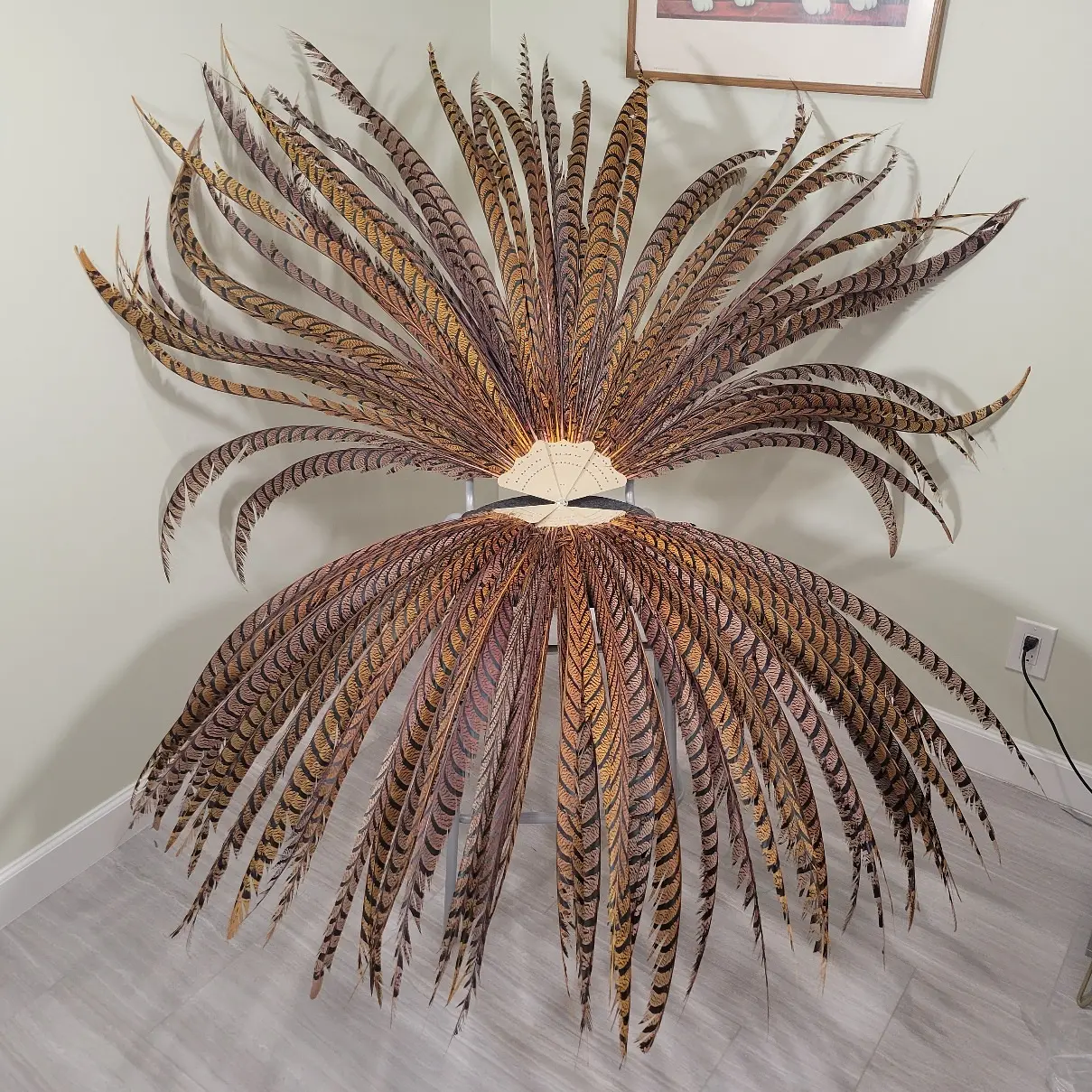
View past projects with center tails.
NOTE: The price of this feather type has jumped tremendously! I’ll continue to work with my supplier and will adjust packages if the cost comes down.
- If you like the wild, side-to-side sway, this is the feather type for you!
- The feathers are naturally a silvery tan with dark black “zebra-like” markings.
- There are no “short” center tails. They only come in 30-35″ and 35-40″ lengths.
- Due to the shape and movement of this feather, it doesn’t mix well with other feather types.
- These feathers are great for light or bright colors, but dye well in deeper colors as well.
Lady Am Side Tails
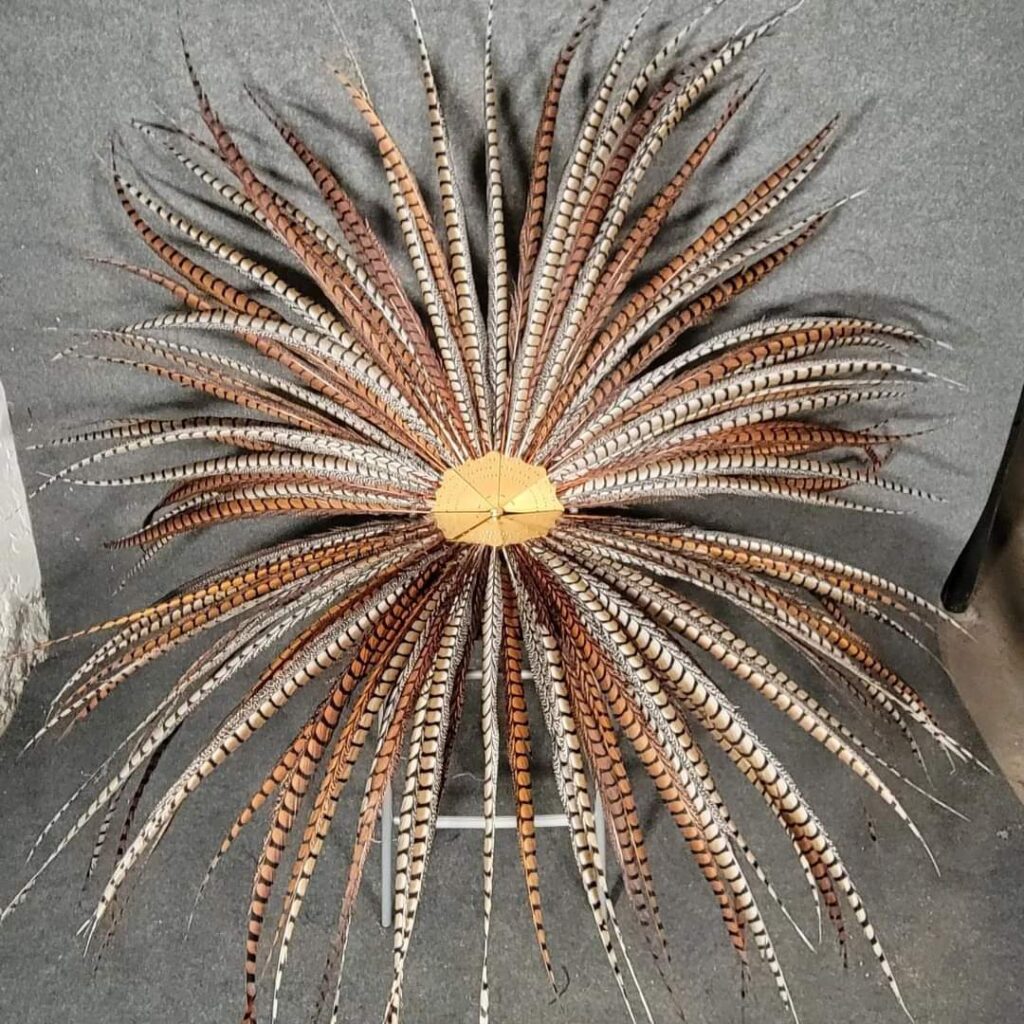
View past projects with side tails.
- These feathers have a more structured, forward and back bend. The shorter feathers are very staccato with little bend. However, the longer the feather, the more side-to-side sway!
- The feathers are naturally a goldish taupe with dark black swoop and speckle markings.
- Feather size ranges:
- 12-19″ often used for a short, contrasting front layer.
- 25-35″ often used for a front layer for greater fill density.
- 35-40″ or 35″+ the most frequently used for large sets.
- These feathers are best for deeper, more bold colors that allow for the natural iridescence to play through.
Add additional dye costs if needed
The pheasant packages include if the feathers are natural (not dyed) or dyed a single color (in one dye batch). If you’d like to do a mix of colors, add an additional dye batch listing to your cart in the additional quantity needed. For example, for 3 colors used in one project you would need to add 2 additional dye batches.
Yes! There are other types of pheasant feathers that are fabulous for fans! As projects feature other feather types, I will add them here. However, these will require a custom commission request.
Venery Reeves
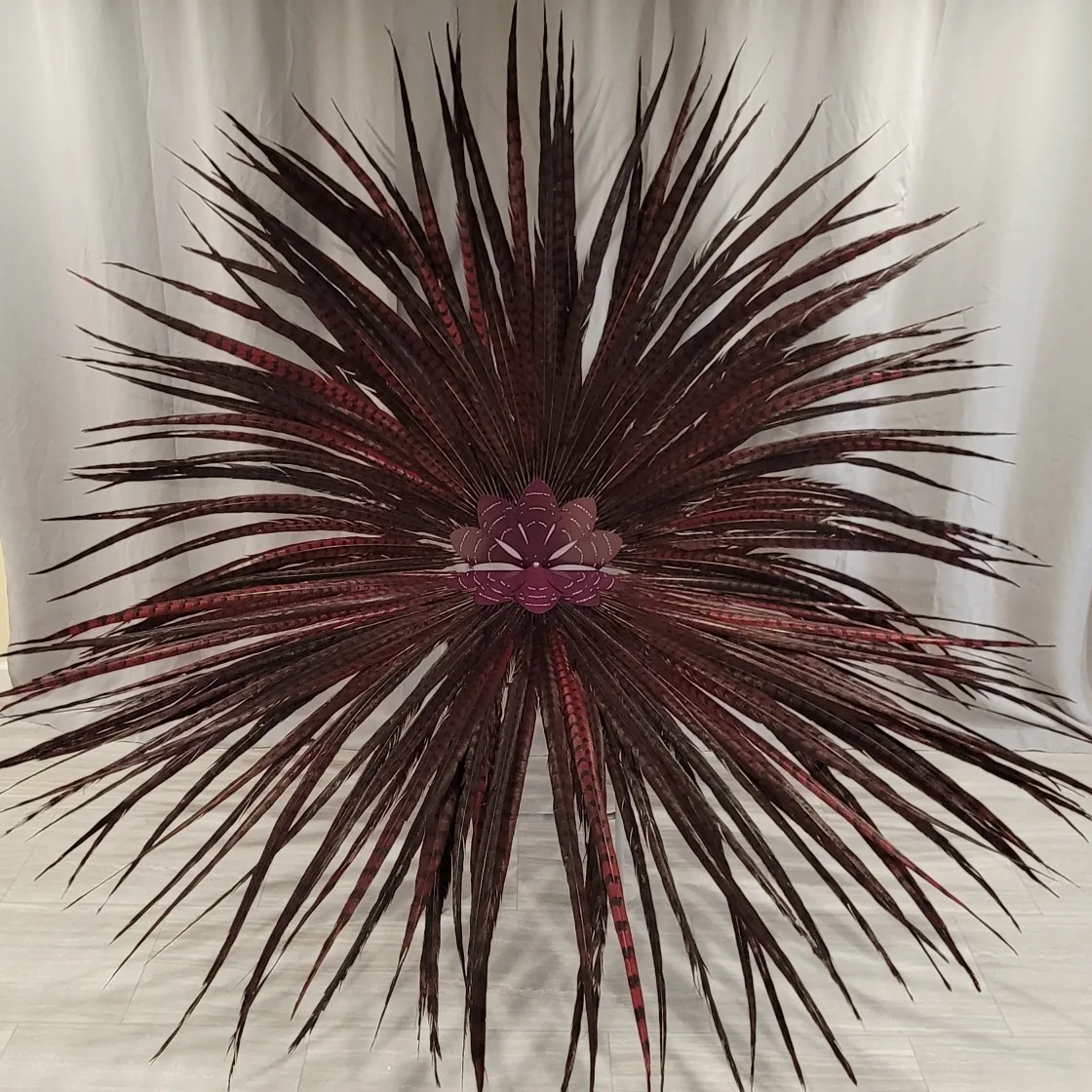
View past projects with venery reeves.
- Although the longer lengths do have good amount of sway, these feathers have a thick, rigid shaft.
- The feathers are naturally a deep tan with orange edges. Depending on the length, they may have deep orange tips.
- These feathers are best natural or dyed deeper, more bold colors.
Golden
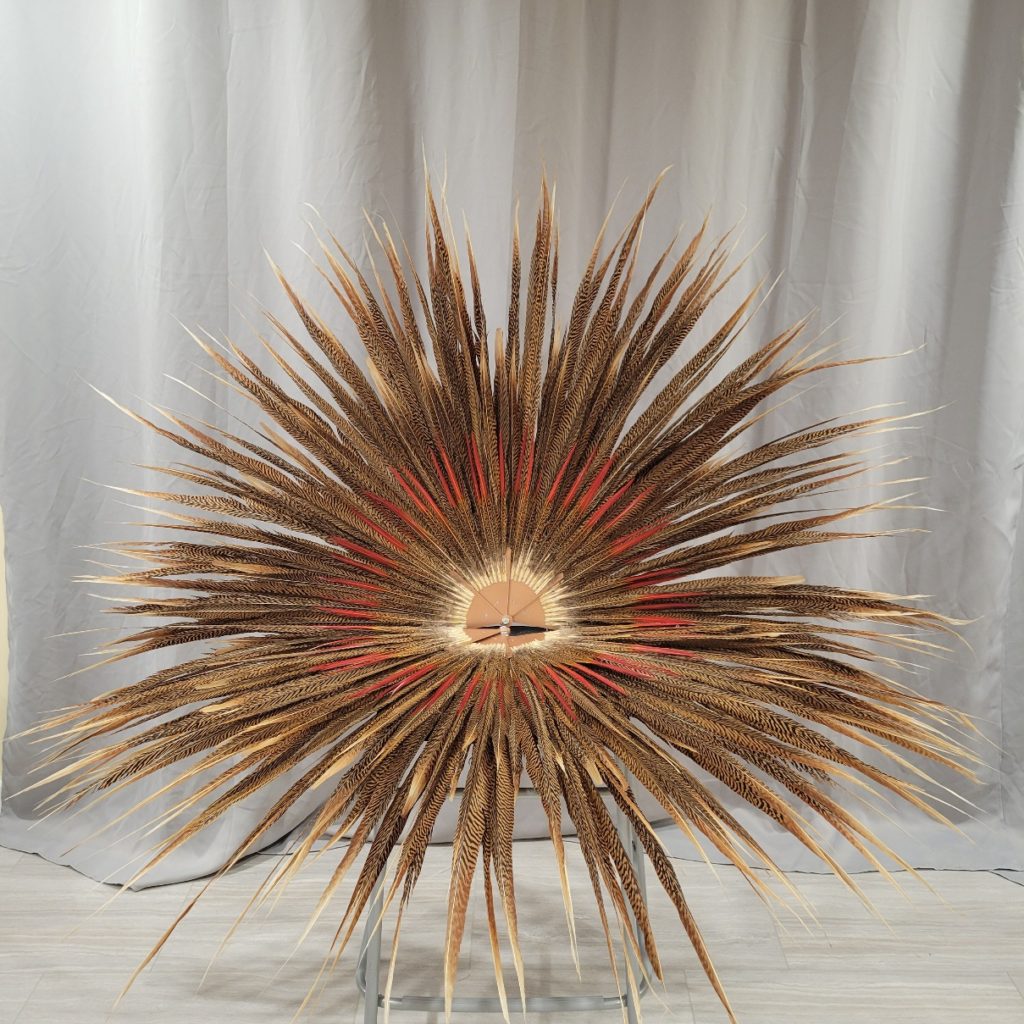
View past projects with golden.
- With very staccato movement, these feathers don’t come longer than approx. 30″.
- The features have incredible, wild cat like markings and a natural ombre to light cream or fiery red depending on the length.
- There is absolutely no reason to even try to dye these!
THIRD – Get ready to connect
After receiving your order, I will review the configuration and work with my supplier to confirm the quantities to max out the budget. I’ll reply via email with the final configuration. At that time, I will match your color request with an available or close dye option.
